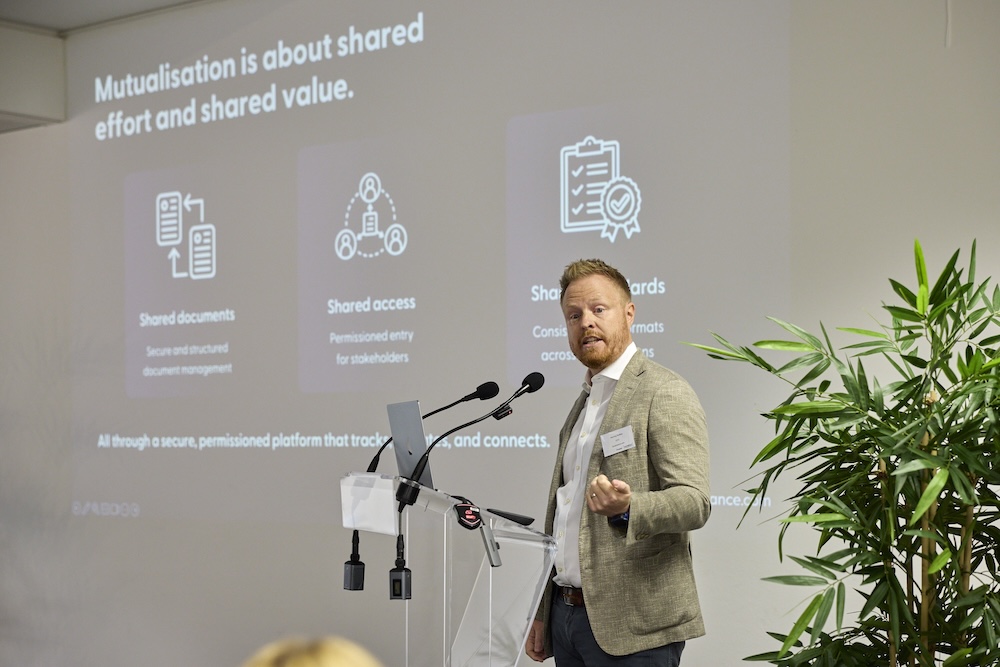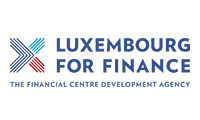 Rupert Schneider, Co-Founder of Gardenia Technologies, is taking part to NadiFin 2019, an acceleration program powered by MiddleGame Ventures and Farvest in partnership with the LHoFT, focusing exclusively on cutting edge Fintech startups that are using AI/ML, Big Data analytics, Blockchain and other “deeptech” tools to create seamless solutions and businesses for the European financial services market.
Rupert Schneider, Co-Founder of Gardenia Technologies, is taking part to NadiFin 2019, an acceleration program powered by MiddleGame Ventures and Farvest in partnership with the LHoFT, focusing exclusively on cutting edge Fintech startups that are using AI/ML, Big Data analytics, Blockchain and other “deeptech” tools to create seamless solutions and businesses for the European financial services market.
Ten of the most promising Fintech companies from around the world have convened at NadiFin on May 20th in Luxembourg, adjacent to the ICT Spring global technology conference, before reconvening in Dublin from June 10-14.
The NadiFin program engages a broad network of investors and strategic partners to facilitate real-world progress outside the classroom. The cohort competes in a trademarked peer-voting startup accelerator curriculum (powered by Village Capital) leading to a €100,000 investment from MiddleGame Ventures.
Gardenia Technologies
- Rupert Schneider, Co-Founder at Gardenia Technologies
- Gardenia Technologies improves profitability through data-driven advanced analytics and ML-driven working capital finance and risk management.
- Located: UK
- Sector: Smart Data
- Website: gardeniatech.com
- Twitter: @gardeniatec
Please introduce yourself, and tell us a little bit about your journey with Gardenia Technologies?
This was the decade of de-leveraging that wasn’t. A decade ago, as the world began to piece the financial system back together after an epic credit crisis, there was agreement on one thing: too much debt had caused the crisis, and so there must be a huge de-leveraging. It has not worked out like that.
So much so that companies have been using accounting loopholes to extend ‘payables days’ by the use of third-party supply chain financing without classifying this as debt causing the magnitude of these unreported debt-like financing to have some major negative credit implications.
This technique, commonly referred to as reverse factoring, was a key contributor to Carillion’s liquidation as it allowed the outsourcer to show an estimated GBP400 million to GBP500 million of debt to financial institutions as ‘other payables’ compared to reported net debt of GBP219 million.
We are an ambitious analytics and finance company redesigning the status-quo for radical global impact; we believe the way businesses transact, process and finance trade can be fundamentally improved; and we are achieving it through the application of advanced analytics and algorithmic financing solutions
Who is your target customer, and what problems do you solve for them?
Gardenia’s target customer are privately held corporations, for whom bottom-line growth seems impossible, out of desperation pay costly fees to consultants to implement change initiatives, >80% of which fail; and whom are getting hit hard by the fact that banking regulation is reducing the availability of finance and whom have very limited access to debt capital markets..
These corporations are looking to lower their cash conversion cycles by improving their working capital and access to affordable finance solutions.
Data is “the new oil”, and the bottom line of Gardenia Technologies. You say that Gardenia is all about Smart Data, not Big Data. Can you explain this more in detail?
There is a large gap between massive amounts of information going back and forth in supply chains and the evidence actually used in financial decisions related to customers and suppliers – supply chain finance, credit insurance, securitizations, ABL, purchase order financing and other financing tools.
Modern supply chains have a high degree of integration and significant information flows across the involved participants and their systems. At the same time, when it comes to financing and risk decisions, most of this information is disregarded or at best is taken at intuitive levels because it is too complex for analysts to process cognitively.
The current decision-making and risk assessment models used for customer and supply chain financing tend to be analyst-centric, based primarily on rules and textbook methods, and use standard and often outdated data modeling tools (spreadsheets, BA and BI tools). Analyst-centric models are human-driven and thus incapable of dealing with large data volumes and high velocities.
The application of state-of-the-art data mining, predictive modeling, and machine learning technologies to discover critical insights from the rich, multi-faceted enterprise and external data and using these insights to provide imminently capturable value (advanced analytics), and conduct a risk assessment to make data-driven financial decisions can create significant competitive advantage for organizations.
Hence, we are all about maximising value for our clients from the largely siloed and untapped data from ERP, CRM, procurement integration and credit files etc. where we normalise this data to parametrise it through proprietary intelligent engines in near real-time, and return the highest possible value to our clients over both the short and long term.
Your interactive visualisation tool offers insights that can help a company reduce their net working capital and improve profits. Can you provide some examples of optimisations it can help deliver?
- Reverse duplicate payments: Discover, recover, and stop backlog of payments made as a result of mistakes or fraud. On a £1bn turnover client this would result in £1.0m recovery p.a.
- Capture payment discounts: identify and improve ability to capture contractual early payment discounts. On a £1bn turnover client this would result in £500k higher capture p.a.
- Make on-time payments: ensure the contractual payment terms are used and invoices are paid only on the due date. On a £1bn turnover client this would result in £20m release of capital
- Extend payment terms: set and track payment term targets at corporate, category, or supplier level. On a £1bn turnover client this would result in £40m release of capital
What are you hoping to get out of the 2019 NadiFin Fintech Acceleration Program?
- Forcing me to Work ON the business rather than in the business!
- Professionalisation of organisation to help us execute now that we have traction.
- Preparation for a Series A that is coming up in the next few months.
- Network with peers, potential clients and stakeholders.









